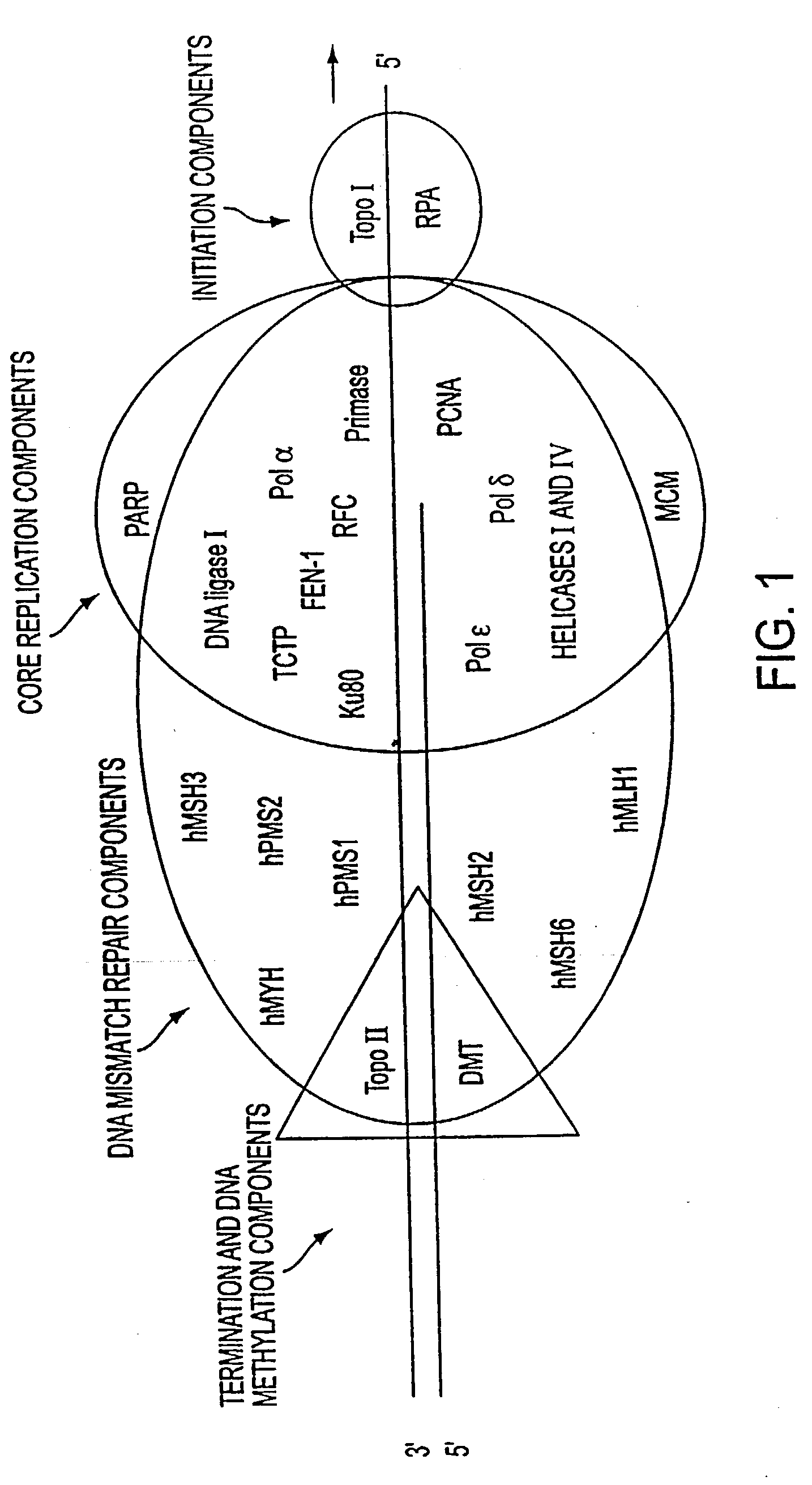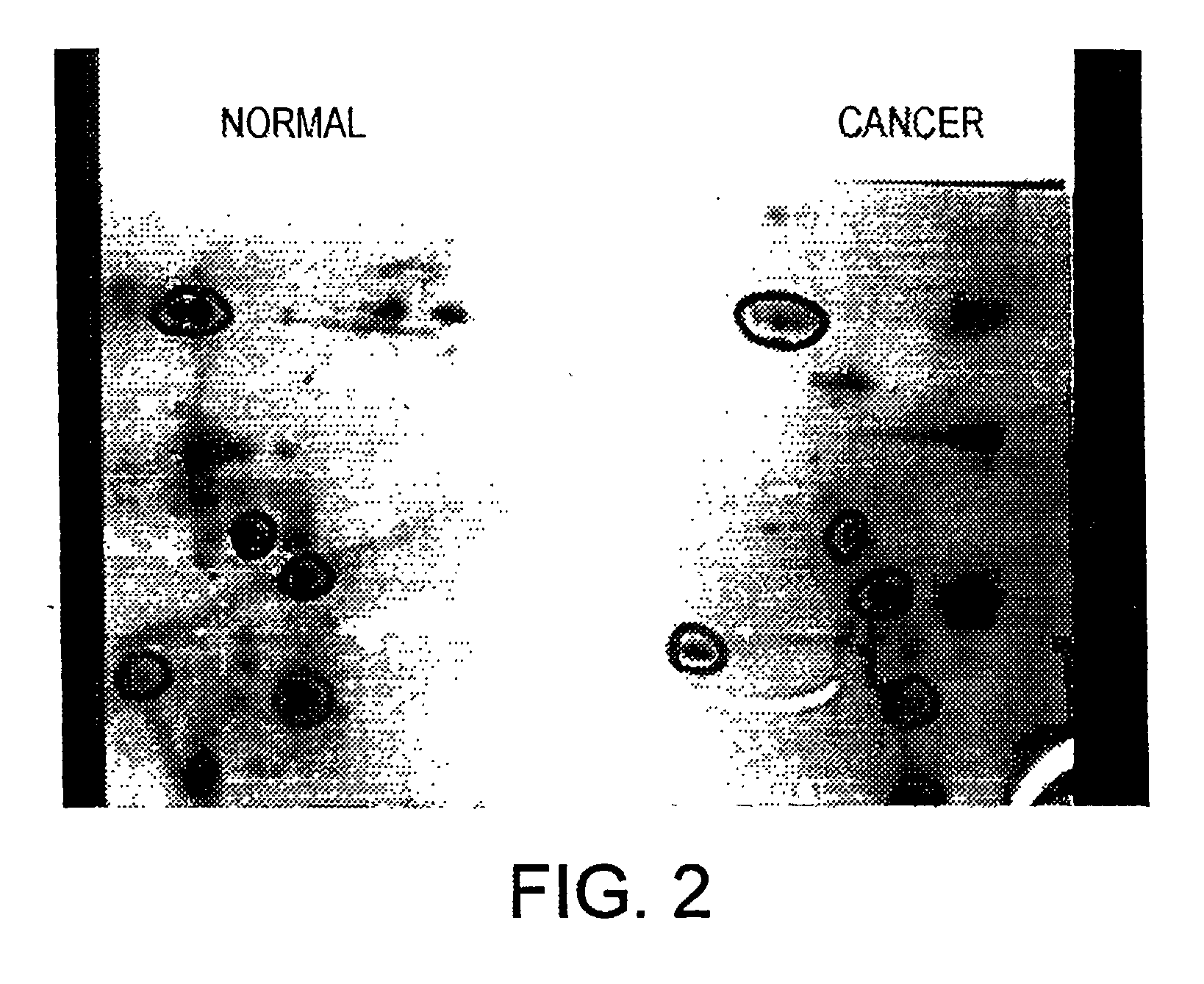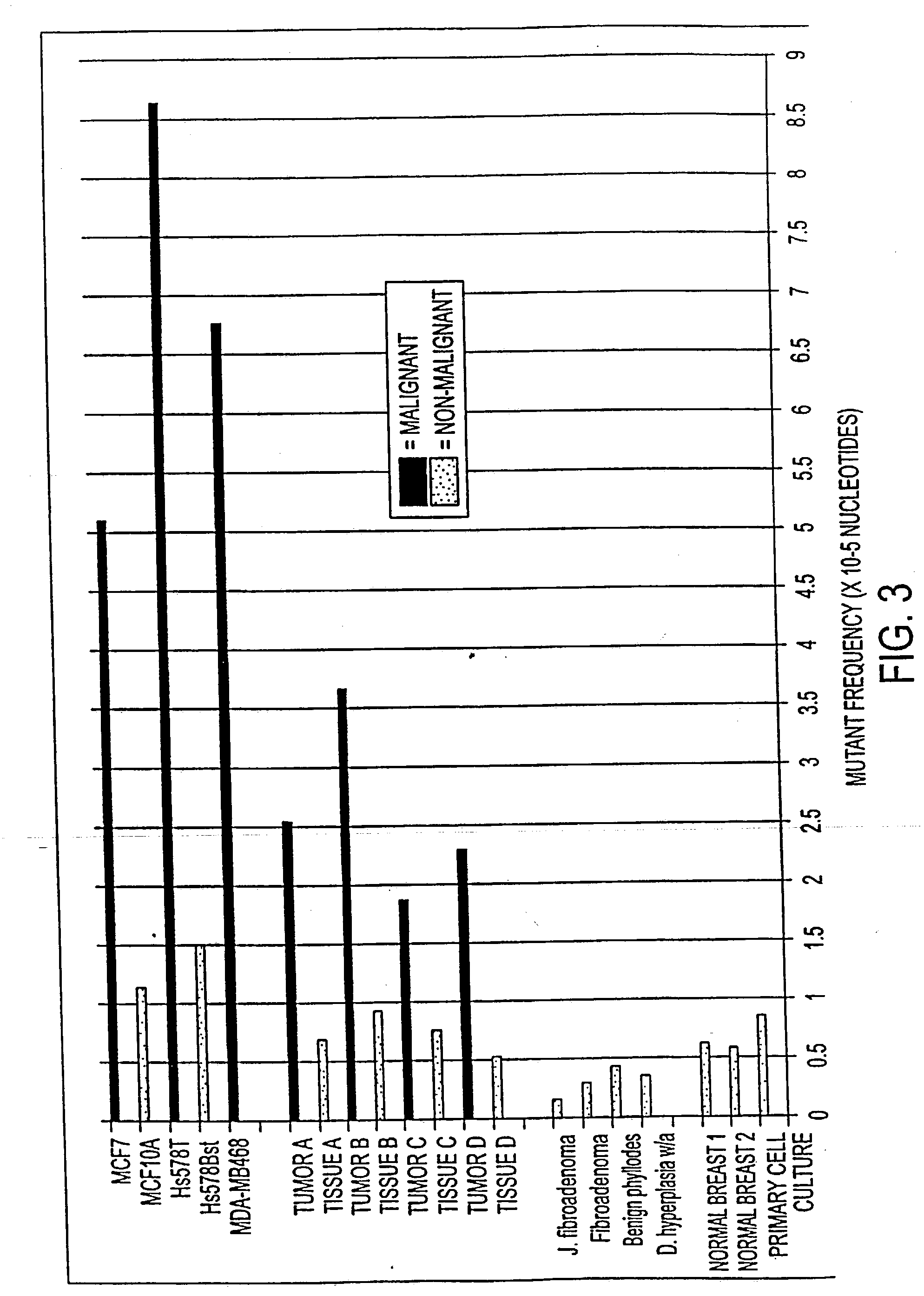Altered DNA synthesome components as biomarkers for malignancy
a technology of dna synthesome and malignant cells, which is applied in the field of malignant cell detection and treatment, can solve the problems of abnormal cell proliferation, unnecessary surgery, and long hospital stay, and achieve the effect of restoring the normal function of the dna synthesome, altering the activity of the regulator, and restoring the normal function of the synthesom
- Summary
- Abstract
- Description
- Claims
- Application Information
AI Technical Summary
Benefits of technology
Problems solved by technology
Method used
Image
Examples
example 1
Replication Fidelity and Activity
[0086] This example demonstrates that the DNA synthesome derived from malignant breast cell and human breast tumors mediate an error-prone DNA replication. This example further demonstrates that malignant and non-malignant DNA synthesome replication activity are relatively similar, indicating that the decrease in replication fidelity is not a result of replication activity.
example 1a
Human Breast Cells
[0087] To assess whether the DNA replication apparatus of malignant breast cells carries out error-prone DNA synthesis, the replication fidelity of the DNA synthesome isolated from malignant and non-malignant human breast cells grown in culture was examined. Using the procedure described in co-pending U.S. patent application Ser. No. 09 / 058,760, the DNA synthesome from malignant human breast cell lines MDA-MB468, Hs578T, and MCF-7. and the nonmalignant human breast cell lines Hs578Bst and early passage MCF-10A was isolated and purified. The replication fidelity of these preparations was evaluated using the procedure described in co-pending U.S. patent application Ser. No. 09 / 045,624. The DNA synthesome derived from MCF-7 produced significantly more nucleotide errors in the nascent DNA than did the synthesome of the nonmalignant MCF-10A cells (see Table 1 and FIG. 3). Specifically, the frequency of mutations produced by MCF-7 DNA synthesome was 4.4 fold higher than...
example 1b
Human Breast Tissues
[0089] To confirm that the results in Example 1A reflected molecular events occurring in human breast tissue, the forward mutagenesis assays described above were performed using the DNA synthesome prepared from surgically resected malignant and nonmalignant human breast tissue were performed. The DNA synthesome was purified by the process described by Stampfer (Stampfer, Tissue Culture Methods, 9:107-115, 1985). To assure that potential differences in replication fidelity were not due to individual genetic variations between patients, the DNA synthesome derived from genetically matched (i.e., the same patient) malignant and nonmalignant tissue from several different breast cancer patients who had not yet received any prior treatment were also examined. The fidelity of replication mediated by the malignant breast tissue DNA synthesome was compared with that carried out by the DNA synthesome derived from genetically matched nonmalignant breast tissue.
[0090] The r...
PUM
| Property | Measurement | Unit |
|---|---|---|
| Fraction | aaaaa | aaaaa |
| Volume | aaaaa | aaaaa |
| Therapeutic | aaaaa | aaaaa |
Abstract
Description
Claims
Application Information
 Login to View More
Login to View More - R&D
- Intellectual Property
- Life Sciences
- Materials
- Tech Scout
- Unparalleled Data Quality
- Higher Quality Content
- 60% Fewer Hallucinations
Browse by: Latest US Patents, China's latest patents, Technical Efficacy Thesaurus, Application Domain, Technology Topic, Popular Technical Reports.
© 2025 PatSnap. All rights reserved.Legal|Privacy policy|Modern Slavery Act Transparency Statement|Sitemap|About US| Contact US: help@patsnap.com



